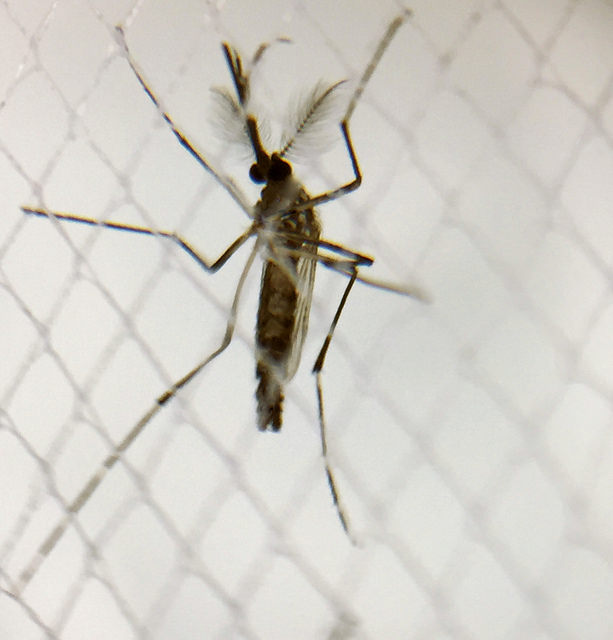Mosquito Species of Concern
In Montgomery County, the three species we are most concerned with – from a public health perspective – are Culex pipiens (Common House Mosquito), Aedes albopictus (Asian Tiger Mosquito) and Aedes aegypti (Yellow Fever Mosquito).
| Mosquito Species | Prevalence | Vector For... | Active (Bites) Primarily in the... | Preferred Breeding Habitat |
|---|---|---|---|---|
| Aedes albopictus (Asian Tiger Mosquito) | Common | Zika, Dengue + Chikungunya Viruses | Day | Container breeders.
Prefer temporary small pools of water around houses, including pots, watering cans, rain barrels, trash cans, birdbaths, clogged gutters, soda cans, etc. |
| Aedes aegypti (Yellow Fever Mosquito) | Uncommon | Zika, Dengue + Chikungunya Viruses | Day | Container breeders.
Prefer temporary small pools of water around houses, including pots, watering cans, rain barrels, trash cans, birdbaths, clogged gutters, soda cans, etc. |
| Culex pipiens (Common House Mosquito) | Common | West Nile Virus | Night | Prefers permanent pools of stagnant water. |
Zika Mosquito Vectors
There has been a recent outbreak of the Zika Virus in Central America, South America and the Caribbean. The Zika Virus is transmitted to people through bites from infected female mosquitoes.Currently the Centers for Disease Control and Prevention (CDC) has evidence that only two species of mosquitos in the United States, Aedes aegypti (yellow fever mosquito) and Aedes albopictus (Asian Tiger mosquito), can serve as vectors (carriers) of the Zika Virus. Climactic conditions limit the home range of A. aegypti to regions with more temperate winters, therefore in Montgomery County, it is likely that A. albopictus is the main threat for Zika transmission.

Aedes aegypti - Photo by NIAID
Asian Tiger ( A. albopictus) and Yellow Fever ( A. aegypti) Mosquitoes
- In Montgomery County, Asian tiger populations peak from May through September. Yellow fever mosquitoes are relatively uncommon because their eggs don't typically survive through Maryland winters.
- Both are considered ‘container breeders’. They do not breed in ponds or wetlands. They require very little water to breed and lay eggs; Home garden areas, wheelbarrows, pots, watering cans, rain barrels, trash cans, birdbaths, clogged gutters, folds in tarpaulins, paddling pools, children’s toys, play sets, trash, soda cans and even bottle caps are some of the places where mosquitoes will breed.
- The female lays several hundred eggs on the edge of a container using a glue-like substance.
- When it rains, it triggers some – not all – of the eggs to hatch and the larvae to drop into the water below. Some eggs don’t hatch, they wait for a subsequent rain. This is why there are little to no mosquitoes around when it is dry, then after a rain, and seemingly all of a sudden, there are swarms of them.
- Both are daytime feeders.
- Adults have a very small home range. If they have a source of food (both nectar and blood) they will remain within a few blocks of where they hatched.Reducing breeding habitat in your yard is crucial to reducing your risk of exposure.
